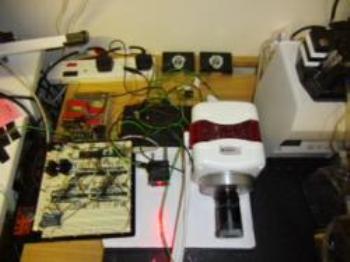High-performance Evolve 128 EMCCD camera from Photometrics' has been employed in the first single camera, multi-parameter cardiac imaging system.
 System components featuring the Evolve 128 EMCCD Camera
System components featuring the Evolve 128 EMCCD Camera
The imaging system determines the electrophysiological function of heart tissue derived from adult human stem cell and is of much importance to researchers at Oxford University and University of Michigan.
The resulting observations, part of a review named ‘Optical Imaging of Voltage and Calcium in Cardiac Cells and Tissues’ were published in the Circulation Research’s issue. Developments in cardiac optical mapping have been illustrated in the review that benefits the cardiac research community for understanding cardiovascular function and disease.
The Evolve 128 EMCCD camera facilitates the demonstration of the electrophysiological functions of adult human stem cell-derived heart tissue for the first time. The functions include simultaneous voltage and ratiometric calcium imaging macroscopically. A novel optical mapping technique for quantitative determination of cardiac tissue function has been represented by this single camera, multi-parametric method.
The Evolve 128 has an efficient camera frame rate of approximately1000 fps at 64x64 px resolution and 10-MHz readout contributes to effective sharing of frames between diverse parameters. A single camera performed imaging of three parameters by multiplexing the camera’s frame-exposures with the help of multi-band optical filter and powerful LEDs. This innovative approach was presented by Peter Lee, one of the authors, and is essential for determining the new cell-based therapies and fundamental mechanisms of cardiac arrhythmias, which is an important aspect in the biomedical field of cardiovascular regenerative medicine.
The study titled ‘Single-Camera, Multi-Parametric Imaging of Human Stem Cell-Derived Heart Tissue’ represents multi-parametric imaging approach and is available on the company’s website.